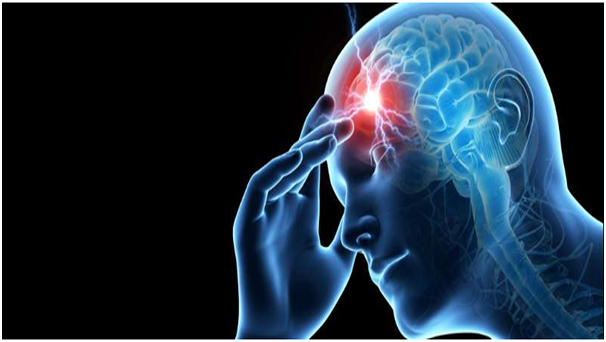Bolgs Detail

Migraine
Migraine is a neurological condition that can cause multiple symptoms. It’s frequently characterized by intense, throbbing pain or a pulsating sensation debilitating usually on one side of the head. Pain present in migraine can be so severe that it interferes with daily activities. Migraines often run in families and affect all ages. The diagnosis of migraine headaches is determined based on clinical history, reported symptoms, and by ruling out other causes. The most common categories of migraine headache are those without aura (previously known as common migraines) and those with aura (previously known as classic migraines).
Signs & symptoms-
Prodrome Phase-Migraine symptoms may begin one to two days before the headache itself. This is known as the prodrome stage. Symptoms during this stage can include: fatigue or low energy, frequent yawning, hyperactivity, irritability, neck stiffness etc.
Aura- In migraine with aura, the aura occurs after the prodrome stage. During an aura, person may have problems with your vision, sensation, movement, and speech. Examples of these problems include: difficulty speaking clearly, feeling a prickling or tingling sensation in the face, arms, or legs, seeing shapes, light flashes, or bright spots.
Actual Migraine attack-The next phase is known as the attack phase. This is the most acute or severe of the phases when the actual migraine pain occurs. In some people, this can overlap or occur during an aura. Attack phase symptoms can last anywhere from hours to days. Symptoms of a migraine can vary from person to person. Some symptoms may include: increased sensitivity to light and sound, nausea, dizziness or feeling faint, pain on one side of your head, either on the left side, right side, front, or back, or in your temples, pulsing and throbbing head pain, vomiting.
Postdrome Phase-After the attack phase, a person will often experience the postdrome phase. During this phase, there are usually changes in mood and feelings. These can range from feeling euphoric and extremely happy, to feeling very fatigued and apathetic. A mild, dull headache may persist.
Migraine attacks last for hours to days.
Migraine treatment is aimed at reducing symptoms and preventing future attacks. Initial treatment includes avoidance of triggers, pain medication such as Paracetamol (acetaminophen), ibuprofen and medication for the nausea. When simple pain medications fail, specific medications such as triptans or ergotamines may be used.
Ayurveda lays emphasis on ‘’Head” (Shira) by terming it as the Uttamanga - The most vital part of the body because all the indriyas (Sense organs) are located in the head along with the Prana (life) of the individual. Shira being seat of Prana and Indriyas is considered under Dashvidha Pranayatanas and Pradhan Marma in Ayurveda. Various Ayurvedic Scholars have elaborated Shiro Roga with Shira Shoola as the chief symptom (Headache Disorders) which describes the prevalence of the diseases from ever since and need of requiring their proper management. Shirashula is collectively used for all the aches and discomfort in the region of cranial vault .Many dietetics, personal, environmental and behavioural factors are responsible for causing headache. It may manifest a disease as whole or it may be a symptom of other disease.
Acharya Shushruta has explained 11 types of Shiro Rogas, namely - 1. Vatika, 2. Pittaja, 3. Kaphaja, 4.Raktaja, 5. Sannipataja, 6. Kshayaja, 7.Krimija, 8. Suryavarta, 9. Anantavata, 10. Ardhavabhedaka, 11. Shankhaka.
Migraine can be correlated to Ardhavbhedaka disease mentioned under Shirogat Vyadhi in Ayurvedic system of medicine. According to Acharya Shushruta the Shiro Roga in which intense pain occurs in half part of head for a period of multiple days days has been termed as Ardhavabhedaka. The nature of the pain in this type of Shiro Roga has been described of pricking nature - like that of a piercing needle and tearing pain and the pain is mainly present in forehead, eyebrow, ear, eye and temporal region. The severe pain is associated with mental confusion. Vitiation of all the three Doshas is chiefly responsible for Ardhavabhedaka
Ayurvedic Treatment of Migraine:
Avoidance of precipitating factors whenever possible, consuming compatible diet and modification in life style are recommended. Panchakarma treatments include Snehana (Oleation) with Balaguduchyadi Taila, Swedana (Nadissweda and Upanaha Sweda), Virechana (medically induced purgation), Anuvasana Basti (Medicated enema), Shirovirechana / Nasya (instillation of medicines in nostrils) with Kshira and Ghrita or Anutaila or shunthi with milk, Raktamokshana (Bloodletting), Shiroabhyanga (head massage) and Shiro Lepa (application of medicine on scalp, head). Shunthi, Yashthimadhu, Godanti Bhasma, Pravala Pisthi are useful in migraine. Ayurvedic preparations like Swarna Sutashekhara Rasa, Laghusutashekhara Rasa and Kalyanaka Ghrita are useful.
Many patients suffering from migraine benefitted and most of them have got full cure from customized Ayurvedic treatment coined by Dr. Kohli. Migraine episodes and their severity have been found to be significantly reduced in the first month of treatment. It takes around 3-4 months for a complete cure.












